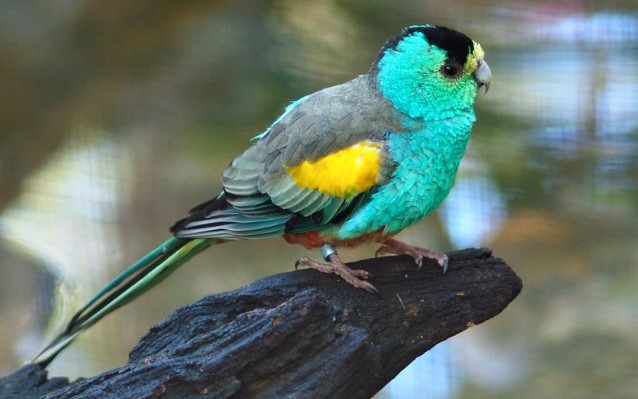Due to their rarity and elegance, Golden-shouldered Parrots (Psephotus chrysopterygius) have become so highly sought after by collectors they are smuggled out of Australia at high prices, endangering their survival. This illegal trafficking could lead to the extinction of the Golden-shouldered Parrot in the near future.
The diet is almost entirely composed of grass seeds, although it is supplemented with berries and vegetable matter. Unlike other parrots, these birds are adept at picking up germs from the ground or removing them from seed heads deftly. During the day, birds spend much time feeding and drinking, sometimes mixing the two activities. Their preferred drinking hole is a small and shallow hole they can walk into. By midday, they fly up to rest in the shade of trees.
The golden-shouldered parrot is rarely seen except in pairs or parties of three to eight, which appear to be the family group of the year. It isn’t until the end of the rainy season that they return to their breeding grounds after they’ve dispersed from their breeding grounds. A swift, direct flight is accompanied by slight undulations on folded wings. The breeding season begins in April when grasses are seeding and the ant hills in which the parrots burrow to nest are still damp.

For several years, the same anthill or burrow can be used. A male struts towards his perched mate as he makes short flights around her, then lands with a short crest of feathers on his frontal area and puffs out his breast. After a week, females may stop brooding young, leaving the nest each day to feed their mates and being fed by them. This is also known as Golden-winged Parakeet, Antbed Parrot, and Anthill Parrot. The size of the Golden-shouldered is about 240-260 mm in length, including a slender tapered tail.
The male forehead, lores, and area below the eyes are pale yellow; the crown and nape are black; the back and shoulders are grey-brown; the rump and upper tail covers are turquoise-blue. The underwing coverts bend the wing, and the outer webs of flight feathers are blue; the median wing coverts are golden yellow. Grey is the color of the chin and throat. There is a turquoise-blue color on the cheeks, neck, breast, and belly area. The lower belly, vent, thighs, and crissum are red with white bases and tips. Inner tail feathers are blue with a bronze wash and black tips; outer tail feathers are green-blue with white tips. The eyes are dark brown in color. The bill is pale grey; the cere is dark grey. The toes, feet, and claws are brownish-grey.
The Female crown and nape are bronze brown; the back of the neck, back, wings, upper breast, and sides of the neck are yellow-green. The face, throat, and sides are gray-tinged bronze-green with a vague dull yellow frontal band. The lower breast, upper belly, and flanks are pale green grading to white; the crissum is pale turquoise-blue. The underside of flight feathers has an off-white stripe. Blue underwing coverts bend of wings, and outer webs of flight feathers.
Immature is similar to an adult female, but with darker and brighter undertail covers and faces. Males do not attain full adult plumage until 15-16 months after fledging. However, down young is white-downed, with yellow-billed.

Golden-shouldered calls in flight are whistle-like fweep-fweeps repeated several times and sometimes drawn out. When perched, parrots repeat an abrupt weet or fee-oo. There is a cluk-cluk sound associated with alarms or distress calls. Breeding and nesting occur from April to August; two broods can be reared in a season. Nests are constructed in termite mounds through tunnels 40-50 cm long. Golden-shouldered Parrots lays four to six white, rounded eggs measuring about 20-21 x 17-18 mm. It takes about 20 days for the female to incubate. About five weeks after hatching, the young fledge.
In the area of Musgrave, Cape York Peninsula, the Golden-shouldered Parrot is usually found centered in rich, well-grassed savanna woodland that is 130 x 240 km wide. Hence the bird is sporadically distributed in the interior and along the west coast of the range. After breeding, birds probably move towards the west coast, returning to the central and eastern districts at the start of the next breeding season. No Races.
Read More – Mulga Parrot (Psephotus varius)







